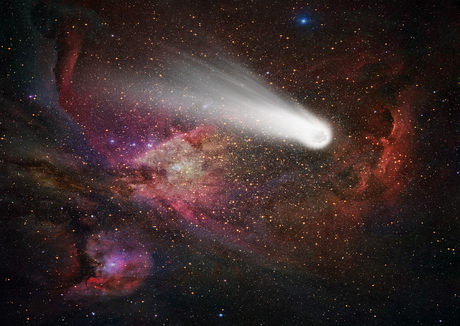Curtin University partners NI in radioastronomy research

National Instruments and Curtin University have entered into research collaboration in the field of instrumentation and signal processing techniques for radioastronomy.
Western Australia’s largest university, Curtin is the lead institution in a consortium of 17 institutions from five different countries that are investigating the origins of the universe. Using the Murchison Widefield Array (MWA), a large-scale telescope in the middle of the desert in Western Australia, researchers are collecting data to study the formation of the very first stars and galaxies 13 billion years ago.
Curtin University and National Instruments signed a memorandum of understanding (MoU) outlining a two-year partnership where both parties mutually share knowledge in radio telescope technology, engineering and field research. The signing took place during NIWeek in Austin. MWA Director Randall Wayth, from Curtin’s Faculty of Science and Engineering, presented details of the MWA project to over 4000 leading engineers, scientists and researchers from around the world during the event’s opening keynote presentation.
Radio telescopes such as the MWA consist of a specialised antenna and radio receiver that receive radio waves from astronomical radio sources. The MWA is a phased array system made up of 2048 antennas that can be electronically steered to focus on different parts of the sky.
“The MWA antennas are organised into 128 tiles, and for every eight tiles, we have one receiver system that performs signal digitisation and pre-processing. Each of these receivers then sends the data over fibre to our central servers, where we perform further processing to generate images. NI provides a critical technology for the supercomputer that processes this big analog data,” said Wayth.
MWA researchers are using commercial off-the-shelf (COTS) digitisers and FPGA (field-programmable gate array) enabled reconfigurable instruments from National Instruments for channelisation. This is a technique that filters germane frequency bands right at the receiver. Using the FlexRIO, along with LabVIEW to program the FPGAs, allows researchers to modify and adapt the FPGA code without being VHDL experts.
“The whole array is generating over 300 Gb of data continuously, which downstream servers can’t handle in real time. Instead of recording all that data, we use FPGAs to pick out only the frequency bands we care about. NI’s instrumentation tools, both hardware and software, give us plenty of room to grow and innovate, from gathering huge amounts of data to processing these meaningfully,” said Wayth.
Chandran Nair, vice president Asia-Pacific at National Instruments, said that the company is very pleased to be collaborating with Curtin University. “Our relationship has grown over the years and we highly regard their efforts to drive research in the field of instrumentation and signal processing techniques for radioastronomy.”
Fleet comms enhanced for Alaskan fishing company
Inrico has delivered a customised communication system to the company, addressing the unique...
ACMA releases latest five-year spectrum outlook
The ACMA has released its Five-year spectrum outlook (FYSO) 2025–30, providing an overview...
It is possible to beam up quantum signals, scientists find
Quantum satellites currently beam entangled particles of light from space down to ground stations...



